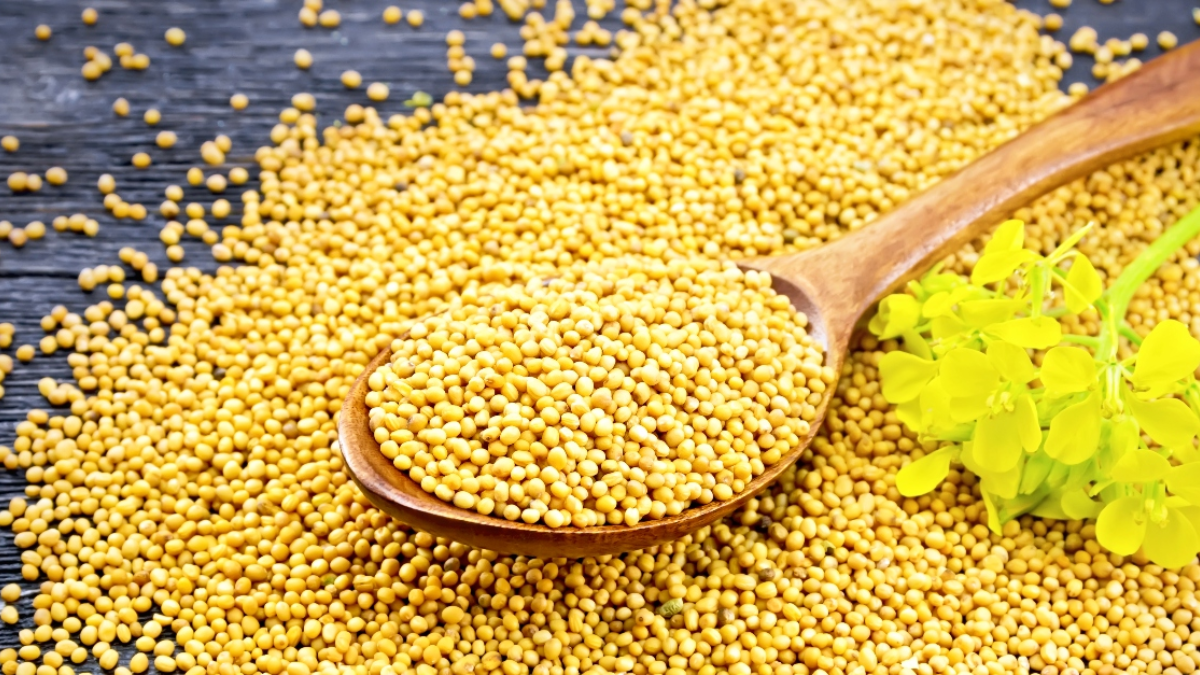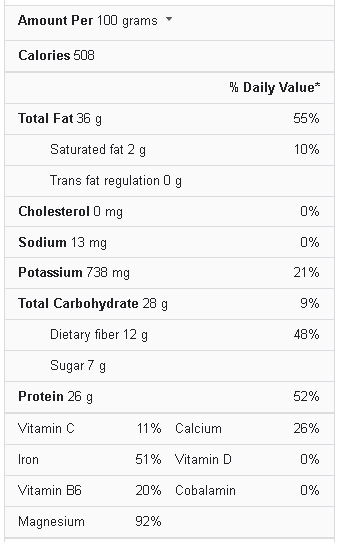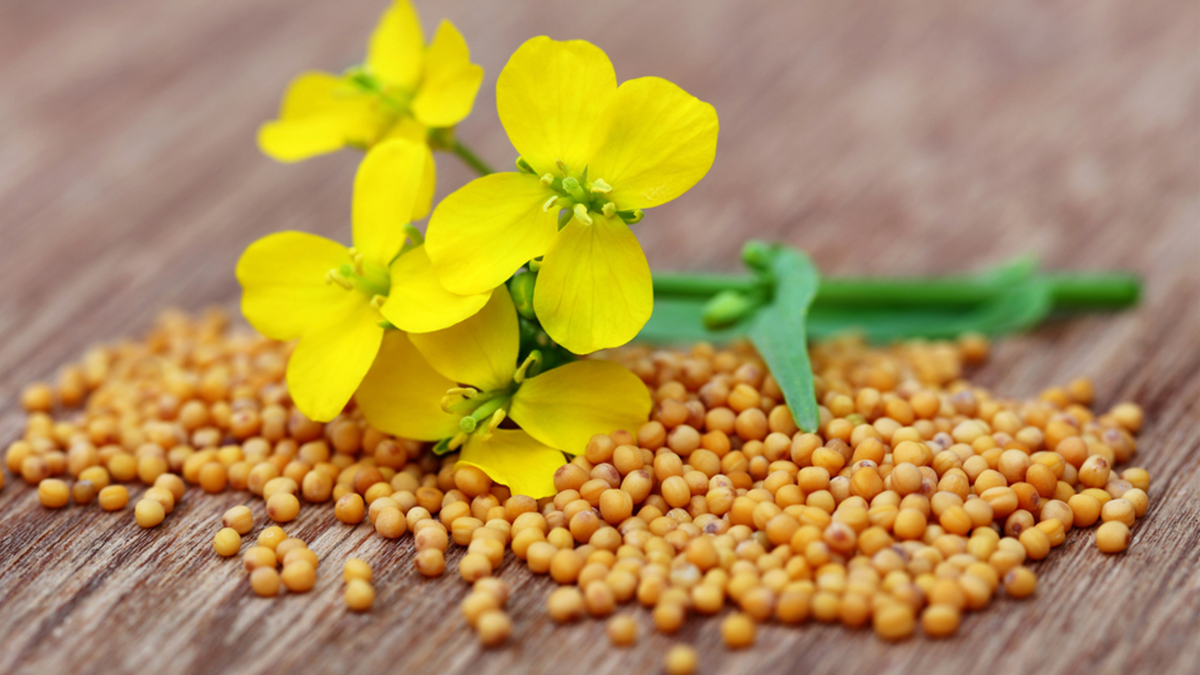Mustard seeds are a common spice found in many kitchens around the world, but few people may know the origin and health benefits of this powerful little seed. The tiny mustard seed is a versatile and flavorful spice that has been used for both culinary and medicinal purposes for thousands of years. These seeds come in different varieties and colors, each with its own unique flavor and aroma. In this article, we will delve deeper into the world of mustard seeds, exploring their origins, uses, nutritional content, and potential health benefits. Whether you’re a seasoned cook looking to add some variety to your spice rack or simply curious about the health benefits of this ancient seed, read on to discover all you need to know about mustard seeds.
There are numerous types of mustard, all of which are particularly nutrient-rich. Minerals like copper, calcium, iron, magnesium, phosphorus, potassium, sodium, zinc, manganese, and selenium are particularly abundant in mustard seeds. Vitamins C and K, thiamin, riboflavin, vitamin B6, and folic acid are among the vitamins that are abundant in them. They contain a significant amount of dietary fiber and are an important source of various bioactive substances, including polyunsaturated fatty acids and antioxidants.
Mustard Seeds Nutrition Facts
What are Mustard Seeds?
The plant that yields black mustard seeds is called Brassica nigra. It belongs to the same genus as cabbage and turnips and is an annual plant; all parts of the mustard plant, including the seeds, leaves, and flowers, are edible. Black mustard seeds originated in the Middle East and Asia Minor and are endemic to North Africa and some regions of Europe and Asia. The tiny seeds have been separated from their seed coverings. They can be used whole or powdered into a spice and are frequently added to hot oil to enhance flavor.
From the Brassica juncea plant come the seeds of brown mustard. Brown mustard seeds come in various colors, from those with a seed coat that is dark brown to those that are dark yellow. It is also frequently referred to as Indian mustard or Chinese mustard.
White mustard, or Sinapis alba, is a plant with seeds used to make yellow mustard. Despite belonging to the same family as the other two mustard varieties—the Brassicaceae—it is not as closely connected to them as they are. Light tan seeds, which are a little bigger than brown mustard seeds, are produced by the white mustard plant. Due to the addition of turmeric or pigment, these turn out to be vibrant yellow mustard.
Origins
The name “mustard” is most likely derived from black mustard seeds. Black mustard seeds are assumed to be the variety of mustard seeds referenced in the Bible since the Romans have employed them since antiquity. They were known as the most ardent (burning must) in medieval France when combined with unfermented grape juice (must), which became moutarde in French and mustard in English.
Brown mustard, which has its roots in the Himalayas, has largely replaced black mustard in American and British kitchens, especially in Chinese restaurants in the United States. The fact that the white mustard plant can be grown in cooler and warmer climes and is native to the Mediterranean region may account for some of its popularity.
Taste
The most potent of the three, but least popular, are black mustard seeds. As evident in the majority of brown mustard sauces, brown mustard seeds are milder than black and hotter than white mustard seeds.
White mustard seeds contain intense tastemakers, especially sinalbin, but they are milder than brown or black seeds. As opposed to brown and black seeds, which send heat up the nose, their heat primarily lingers on the tongue. In comparison to those types, the heat also lasts less time.
What are Mustard Seeds Used for?
In many different cuisines worldwide, these seeds are used in cooking. The beauty of using these seeds in cooking is that the flavor varies depending on how you incorporate them into a recipe. Uses for these seeds include using them whole, in powder form, or as a paste. Whole mustard seeds are quite weak and are typically used to enhance the flavor or flavor of other herbs and spices. Contrary to other flavorful whole spices like cumin, caraway, and coriander, they cannot be regarded as the dish’s main attraction.
One must not undervalue the powder produced by these cunning seeds. When used as a pickling spice to prepare pickled vegetables like carrots, gherkins, turnips, and others, it is considered the star. They mostly serve as an adjunct to other ingredients like curry leaves, ginger, etc., improving the flavor and texture of the dish as a whole.
Here are some suggestions for cooking using mustard seeds:
- Salad dressings, pickles, and sauces can benefit from a teaspoon or two of whole mustard seeds.
- To liberate the inherent flavors of mustard seeds, we advise using the tempering cooking technique, which involves roasting mustard seeds in heating oil for a brief period while making curries, soups, and casseroles. If the oil is hot, be careful not to burn them because they tend to burn very quickly.
- When preparing savory slices of bread, stir a couple of teaspoons of whole mustard seeds into the dough.
- Whole seeds can be ground into a paste to give sandwiches, sauces, and dips more zing.
- To prepare spice rubs and marinades, crush a few mustard seeds and combine them with other spices. Additionally, mustard seeds can be included in breadcrumbs while forming a coating.
- Using a food processor or grinder, ground whole mustard seeds to create a homemade mustard powder or paste.
Health Benefits of Mustard Seeds
Here are the health benefits of mustard seeds:
Mustard Seeds are Loaded with Vitamins and Minerals
They are rich in vitamins and minerals and are a common component in Indian and American cuisine. They come in various colors, provide a wide range of health advantages, and have been used for therapeutic purposes for many years. The tiny round seeds were first employed in temperate regions of Europe before spreading slowly to North Africa and Asia. Today, the entire world is aware of the advantages of seeds.
Prevent Cancer
Glucosinolates and myrosinase, two substances found in abundance in mustard seeds, stop the formation of cancerous cells in the body. The microscopic seeds may have chemopreventive potential and may shield against the effects of carcinogens, according to a study published in the Journal of Human & Experimental Toxicology.
Reference: Mustard Is a Miracle Seed to Human Health
Provide Relief from Headache
Additionally helpful for headache and migraine sufferers are mustard seeds. Magnesium, abundant in seeds, calms our nervous system and eases pain and strain in all areas of our bodies.
Good for Digestive Health
Additionally beneficial to your digestive tract are mustard seeds. The seeds’ high fiber content facilitates simple bowel movements and improves the body’s digestive capacity. They can aid in indigestion relief if you are experiencing this issue.
Good for Cardiovascular Health
Every Indian household uses mustard oil, which is particularly advantageous for those with cardiovascular issues. Your heart’s health depends on managing your cholesterol levels and lowering blood levels of harmful cholesterol.
Strengthen Bones, Teeth, and Gums
Antioxidant and anti-inflammatory qualities found in it reduce gum, bone, and tooth discomfort. Additionally, they support the health of your teeth, hair, and nails. The element selenium, which strengthens bones, is abundant in them, making them excellent for your bones.
Good for Skin
In every season, it’s crucial to keep your skin hydrated, and they can assist. The anti-inflammatory qualities of the seeds can lessen inflammation in the body. Your skin will be moisturized, cleaned of pollutants, and protected against acne by the seeds.
Prevents Ageing
Aging is a given. It cannot be stopped once it starts. However, you can postpone it by eating these seeds. The vitamins A, K, and C found in abundance in the seeds can assist a person in delaying the onset of aging.
Mustard Seeds Side Effects
Mustard seeds may have negative impacts. It would help if you were cautious about how many seeds you consume. When applying mustard paste to your skin, use caution because it shouldn’t come into contact with your eyes. Tears in the eyes and discomfort are both caused by mustard seeds. Here are a few potential negative effects of consuming too much mustard seed.
- Abdominal Pain: Although eating these seeds is safe, some people may develop allergies. You should see a doctor if you get abdominal pain after eating mustard seeds. Inflammation in the gut could result from these infections getting worse. Overuse might cause internal bleeding from the stomach and intestines.
- Diarrhea: Since mustard has a lot of fiber, over-ingestion of it can also result in diarrhea. An allergic reaction can be the cause. In certain people, it can also cause intestinal irritation. Gas and nausea are two additional symptoms that can accompany diarrhea.
Best Substitute & Food Pairings
Since mustard seeds can be used for many different things, keeping a little jar on hand is advised if you enjoy cooking with spices. It is challenging to mimic the flavor of mustard seeds because of their distinctive, delicate flavor. You can easily omit them from the recipe if you don’t have them.
You can replace one teaspoon of mustard seeds with 1/2 teaspoon of dry mustard powder or 1/2 teaspoon of mustard sauce to give the dish a bit of the spice that mustard seeds add.
Sesame or poppy seeds can be used in place of mustard seeds to replace the crunch they provide. All mustard seeds, such as yellow, brown, or black, can be readily swapped out.
Where to Buy Mustard Seeds?
Yellow mustard seeds from American manufacturers like McCormick should be available in the spice department of a regular supermarket store. These seeds are also found in popular pickling spice mixtures. Brown seeds can be bought online, in Asian specialty shops, or at specialized spice shops like Penzeys. Black seeds are frequently available in Indian specialty shops.
Conclusion
The formal name for mustard seeds is “Brassica nigra,” They are one of the most often used spices in European, American, North African, and certain Asian cuisines. Two varieties of mustard seeds exist. Both yellow and black seeds are rich sources of vitamins and minerals. While brown and black mustard seeds are more heavily flavored with sharp, spicy, and bitter flavors, yellow seeds have a sweet and spicy flavor. Prepare to enjoy mouthwatering treats by adding any mustard seed to your cooking.



